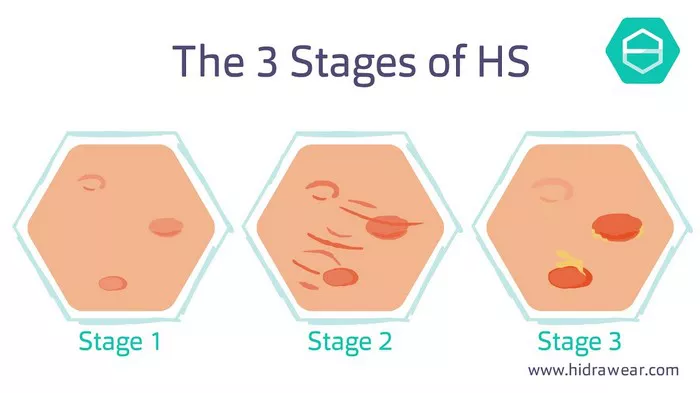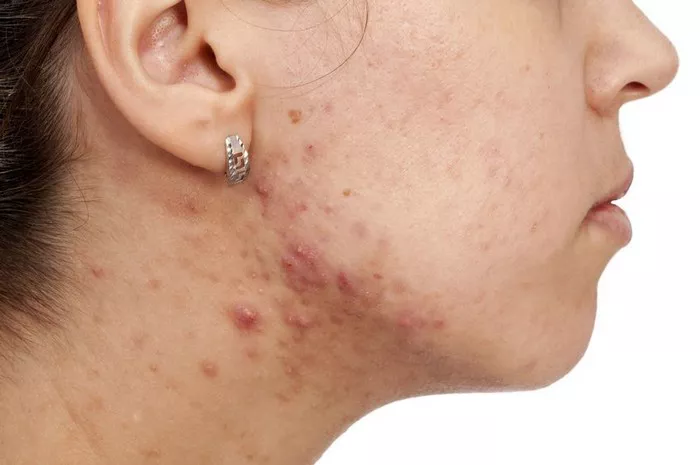Hidradenitis Suppurativa (HS) is a chronic skin condition characterized by painful, inflamed lumps that can occur in various parts of the body. One of the most common and distressing areas affected by this condition is the groin. This article will delve into the specifics of Hidradenitis Suppurativa in the groin, covering its symptoms, causes, diagnosis, treatment options, and management strategies.
Understanding Hidradenitis Suppurativa
Hidradenitis Suppurativa is a chronic, recurring inflammatory skin disease that primarily affects areas with apocrine sweat glands, such as the underarms, under the breasts, buttocks, and groin. It is also known as acne inversa due to its nature of causing painful nodules and abscesses. These lumps can rupture, leading to tunnels under the skin and scarring over time. The condition often starts after puberty and can persist for many years, significantly impacting the quality of life.
Symptoms of Hidradenitis Suppurativa in the Groin
The groin is particularly susceptible to HS due to the presence of apocrine sweat glands and the friction caused by movement. Symptoms in the groin area can include:
1. Painful Lumps: The most common symptom is the appearance of painful, red lumps or nodules. These lumps can vary in size and often become inflamed and tender.
2. Abscesses: The lumps may progress to form abscesses, which are pus-filled lesions that can be quite painful and may rupture, releasing a foul-smelling discharge.
3. Sinus Tracts: Over time, repeated episodes of inflammation can lead to the development of sinus tracts or tunnels under the skin. These tracts can connect different abscesses and lead to chronic drainage and infection.
4. Scarring: As the condition progresses, it can cause significant scarring in the groin area. This scarring can be thick and fibrous, leading to restricted movement and discomfort.
5. Foul Odor: The discharge from the abscesses often has a foul odor due to bacterial infection, which can be distressing and embarrassing for the affected individual.
6. Itching and Burning: The affected area can also be itchy and have a burning sensation, adding to the discomfort.
Causes and Risk Factors
The exact cause of Hidradenitis Suppurativa is not well understood, but several factors are believed to contribute to its development:
1. Genetic Predisposition: There is a strong genetic component to HS, with many patients having a family history of the condition.
2. Hormonal Factors: The onset of HS typically occurs after puberty, suggesting a link to hormonal changes. Additionally, flare-ups can be associated with menstrual cycles in women.
3. Immune System Dysfunction: HS is considered an autoinflammatory disease, where the immune system erroneously attacks the body’s own tissues, leading to inflammation.
4. Obesity: Being overweight or obese is a significant risk factor for HS. Excess weight can lead to increased friction and sweating in the groin area, exacerbating the condition.
5. Smoking: Tobacco use is another known risk factor. Smoking can worsen the symptoms and progression of HS.
6. Environmental Factors: Certain environmental factors, such as heat and humidity, can trigger flare-ups of HS.
Diagnosis of Hidradenitis Suppurativa in the Groin
Diagnosing HS in the groin can be challenging due to its similarity to other skin conditions such as boils, abscesses, or sexually transmitted infections. However, a proper diagnosis is crucial for effective treatment. The diagnostic process typically involves:
1. Clinical Examination: A thorough examination of the affected area by a dermatologist. The presence of typical lesions, sinus tracts, and scarring can help in diagnosing HS.
2. Patient History: A detailed medical history, including family history, onset, and pattern of symptoms, is taken into account.
3. Imaging Tests: In some cases, imaging tests like ultrasound or MRI may be used to assess the extent of the disease and the presence of sinus tracts.
4. Biopsy: A skin biopsy may be performed to rule out other conditions and confirm the diagnosis of HS.
Treatment Options
There is no cure for Hidradenitis Suppurativa, but several treatment options can help manage the symptoms and reduce flare-ups. Treatment strategies often depend on the severity of the condition.
Medical Treatments
1. Topical Treatments: Mild cases of HS can be managed with topical treatments, such as clindamycin or resorcinol, which can help reduce inflammation and bacterial infection.
SEE ALSO: Does Hidradenitis Suppurativa Cause Cancer?
2. Oral Antibiotics: For more severe cases, oral antibiotics like doxycycline, minocycline, or rifampin can be prescribed to control bacterial infections and reduce inflammation.
3. Biologic Therapy: Biologics, such as adalimumab (Humira), are newer treatments that target specific parts of the immune system involved in HS. These are typically used for moderate to severe cases and can significantly reduce symptoms.
4. Hormonal Therapy: In women, hormonal treatments like oral contraceptives or anti-androgens may help control HS flare-ups linked to menstrual cycles.
5. Corticosteroids: Steroid injections or oral corticosteroids can be used to reduce inflammation during acute flare-ups.
6. Retinoids: Oral retinoids, such as isotretinoin, may be prescribed in certain cases, although their effectiveness in HS is variable.
Surgical Treatments
In cases where medical treatments are not sufficient, surgical options may be considered:
1. Incision and Drainage: This involves draining abscesses to relieve pain and reduce infection. However, it is usually a temporary solution.
2. Laser Therapy: Laser treatments, such as carbon dioxide laser, can help remove affected tissue and reduce scarring.
3. Wide Excision: In severe cases, surgical removal of the affected skin and underlying tissue may be necessary. This can provide long-term relief but requires significant recovery time.
4. Unroofing: This procedure involves opening up sinus tracts to allow better drainage and healing.
Management Strategies
Managing HS in the groin requires a combination of medical treatments and lifestyle adjustments. Here are some strategies to help manage the condition effectively:
1. Hygiene: Keeping the groin area clean and dry is essential. Regular washing with antibacterial soap and gentle drying can help prevent infections.
2. Clothing: Wearing loose, breathable clothing can reduce friction and sweating, which can exacerbate HS symptoms.
3. Weight Management: Maintaining a healthy weight through diet and exercise can help reduce the severity of HS.
4. Smoking Cessation: Quitting smoking can significantly improve the symptoms and progression of HS.
5. Stress Management: Stress can trigger flare-ups in some individuals. Practicing stress-reducing techniques like meditation, yoga, or therapy can be beneficial.
6. Diet: Some studies suggest that a diet low in dairy and high in fruits, vegetables, and whole grains may help reduce inflammation and flare-ups.
7. Support Groups: Joining support groups for people with HS can provide emotional support and practical advice for managing the condition.
Living with Hidradenitis Suppurativa in the Groin
Living with HS, especially in the groin area, can be challenging due to the physical discomfort and emotional distress it causes. It is important for individuals with HS to work closely with their healthcare providers to develop a comprehensive management plan. Regular follow-ups and adjustments to the treatment plan may be necessary to achieve the best outcomes.
Conclusion
Hidradenitis Suppurativa in the groin is a painful and chronic condition that requires a multifaceted approach for effective management. While there is no cure, various medical and surgical treatments, along with lifestyle adjustments, can help control symptoms and improve quality of life. Early diagnosis and a proactive treatment plan are key to managing this condition successfully. If you suspect you have HS, it is important to consult a dermatologist for a proper diagnosis and treatment plan tailored to your specific needs.
Related Topics:
























